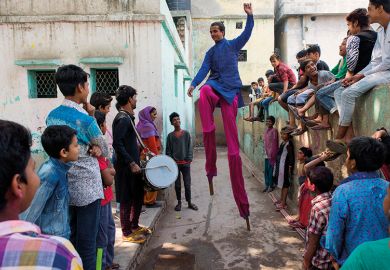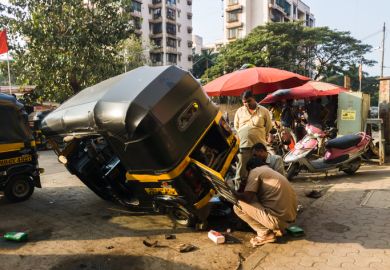In 2010-11, 27.5 million students attended college and university in India. Their numbers have grown steadily since then to 43 million in 2020-21. The gross enrolment ratio (GER) in higher education for 18- to 23-year-olds increased from 19.4 to 27.3 per cent in the same period.
These numbers look good on paper. College education can open doors and improve young people’s life chances. A large educated workforce also has the potential to drive India’s economic growth as it seeks broader acknowledgement in the international community as a great power. However, there are two big problems.
First, while the growth in student numbers indicates healthy improvements on the supply side, what students learn in college is not always what employers want them to learn. Over the past decade, several editions of the India Skills Report (compiled by online talent assessment company Wheebox) have shown that only a relatively small share of college graduates are considered employable, and this is true across disciplines. While there has been some improvement in this regard, it is still the case that only 50.3 per cent of graduates are considered employable, according to the 2023 report. India’s higher education institutions need to do much better in improving the quality of education.
The second challenge is no less significant: namely, that the number of graduates in specific subjects does not always bear much relation to the number of vacancies in related industries. With larger numbers of college students looking for jobs, both the government and industry need to provide reliable information on current and expected future demand for jobs across various sectors and disciplines. Their current failure to do so leads to oversupply in some sectors and undersupply in others.
For example, engineering is a popular discipline for Indians. In 2010-11, approximately 2.4 million students – 18 per cent of all undergraduates – were enrolled in engineering and technology. This increased to 3.67 million in 2020-21, but this accounted for only 12 per cent of all undergraduates. Engineering’s relative popularity declined because of a combination of low employability rates and lack of sufficient employment opportunities.
Yet employability numbers in engineering have barely improved. According to the India Skills Report, 57.4 per cent of Indian engineering graduates were considered employable in 2023, compared with 57.1 per cent in 2019. A different report specifically on engineering, the National Employability Report for Engineers, published in 2019, puts the number much higher, at 80 per cent, but it also noted that the low employability of Indian engineers was a “stubborn issue that has shown little or no macro improvement” since 2010.
The number of design graduates is very low in comparison with engineering. As per government reports, in 2011-12 only 3,385 students were enrolled for an undergraduate degree in design. By 2020-21, that had jumped to 40,586 (excluding those enrolled in specialised courses such as textile and leather design), but there remains a shortage of designers as the sector is said to be growing at a rate of 23 to 25 per cent annually.
India’s older established public institutions, such as the National Institutes of Design (NIDs) and the Indian Institutes of Technology (IITs), admit a very small number of students, so the shortage of designers is increasingly being addressed by private universities, many of which have launched design programmes. But the problem is an all too familiar one: most design programmes do not produce employable graduates. As the Confederation of Indian Industry (CII)’s India Design Report puts it, there is a “common sentiment within the design industry that design graduates are not well trained” and “do not possess competencies as required by the industry”.
It is up to the government’s key regulatory organisations in higher education – the University Grants Commission (UGC), the All India Council for Technical Education (AICTE), the National Assessment and Accreditation Council (NAAC) and others – to look into and address these long-standing supply-side challenges, especially the quality of education at both public and private universities. Otherwise, India’s huge production of graduates will continue to count for much less than it ought to when it comes to economic returns – for both individuals and the nation.
Pushkar is director of the International Centre, Goa, and a member of the Academic Council at J. K. Lakshmipat University (JKLU).
POSTSCRIPT:
Print headline: Supply, but is there demand?
Register to continue
Why register?
- Registration is free and only takes a moment
- Once registered, you can read 3 articles a month
- Sign up for our newsletter
Subscribe
Or subscribe for unlimited access to:
- Unlimited access to news, views, insights & reviews
- Digital editions
- Digital access to THE’s university and college rankings analysis
Already registered or a current subscriber?




